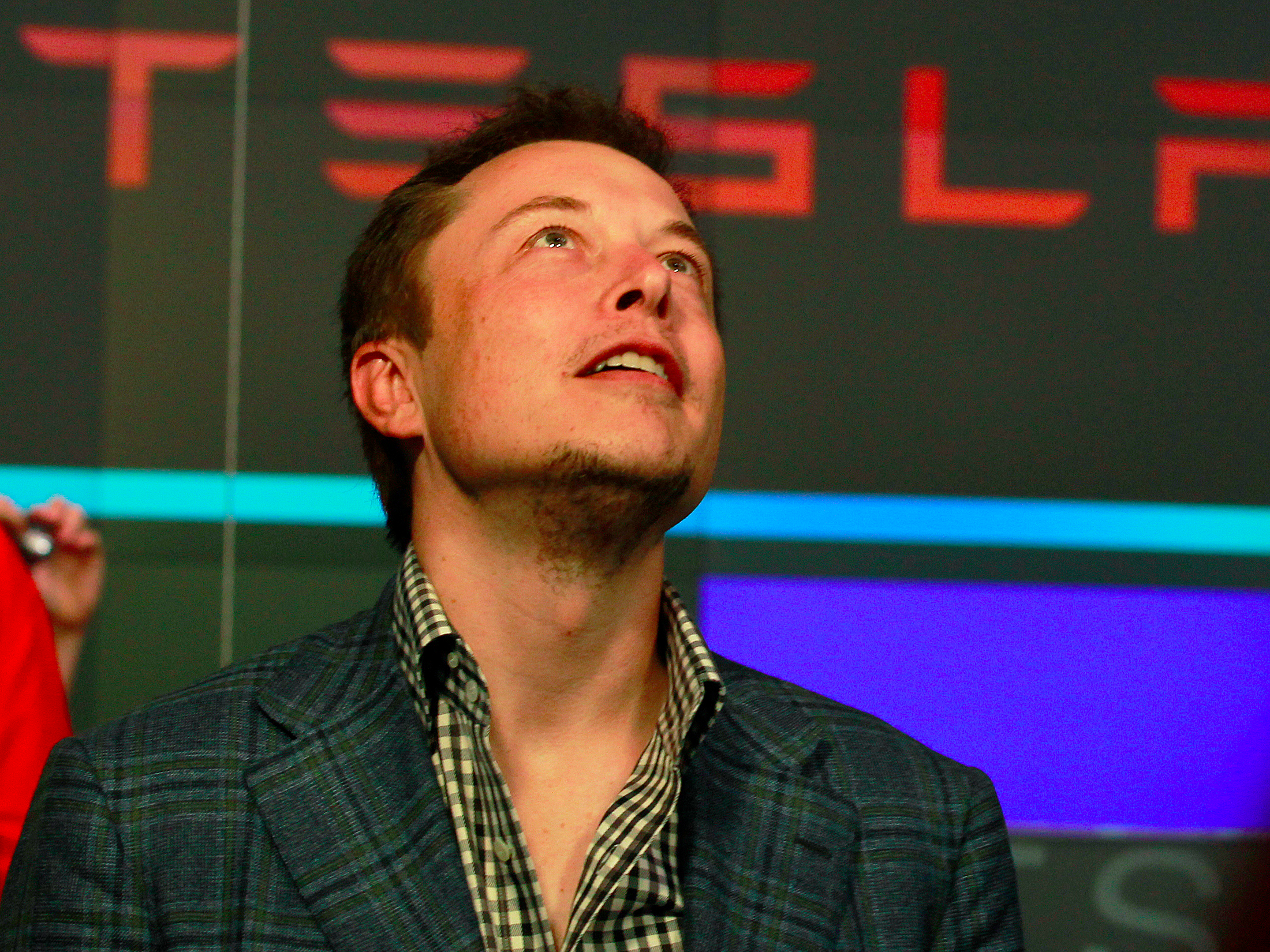Tesla Motors officially changed its name on Wednesday.
The company, known for its impressive electric cars, will now simply go by Tesla Inc.
While it may seem like a small change, the move marks a symbolic shift for the company. For the last few years, Tesla has been pushing beyond electric cars into new areas of business, specifically energy storage and generation.
But Tesla’s journey to becoming this new company has not always been easy. While the company has celebrated plenty of achievements, it has also experienced its fair share of setbacks.
Here’s a breakdown of the company’s most defining moments since its founding.
July 2003: Tesla Motors was founded by a group of Silicon Valley engineers.
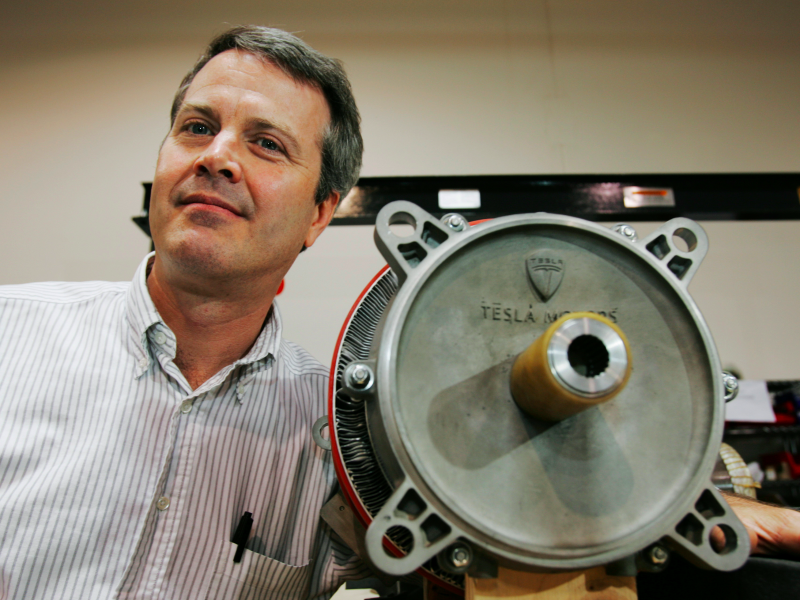
While Tesla CEO Elon Musk has led Tesla for the majority of its existence, he wasn't always at the helm of the company.
Tesla, which is named after the famous physicist Nikola Tesla, was incorporated in 2003 by two engineers, Martin Eberhard and Marc Tarpenning. Other co-founders included JB Straubel, Ian Wright, and Elon Musk.
Musk led the company's Series A funding round in 2004, but at the time he served as the company's chairman.
Eberhard served as CEO until August 2007, at which time he was reportedly asked to leave the company.
On November 28, 2007 Ze'ev Drori, an Israeli engineer and businessman, was named CEO of the company.
August 2, 2006: Elon Musk reveals Tesla's Master Plan.
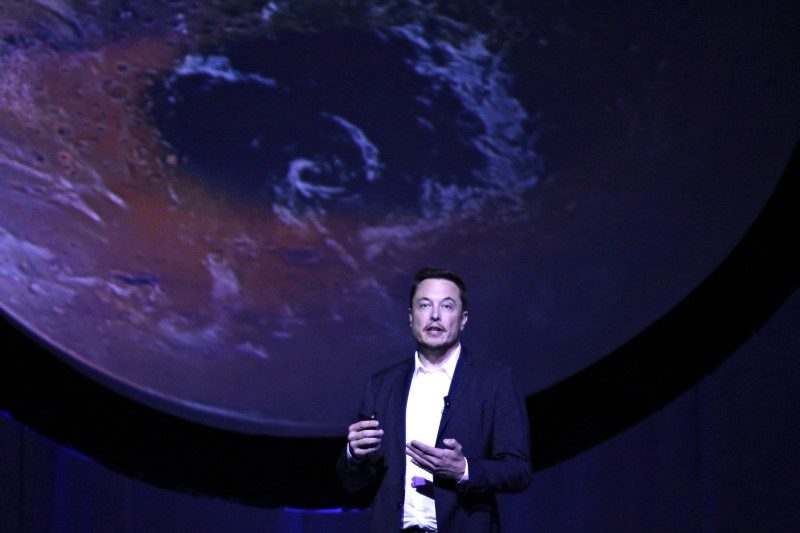
Musk has never been shy about his intentions for Tesla.
In 2006, Musk published a blog post entitled "The Secret Tesla Motors Master Plan (just between you and me)" in which he made it crystal clear that Tesla's mission is to speed up the adoption of a "solar electric economy."
"As you know, the initial product of Tesla Motors is a high-performance electric sports car called the Tesla Roadster," Musk said.
"However, some readers may not be aware of the fact that our long term plan is to build a wide range of models, including affordably priced family cars. This is because the overarching purpose of Tesla Motors (and the reason I am funding the company) is to help expedite the move from a mine-and-burn hydrocarbon economy towards a solar electric economy, which I believe to be the primary, but not exclusive, sustainable solution."
November 28, 2007: Ze'ev Drori named CEO.
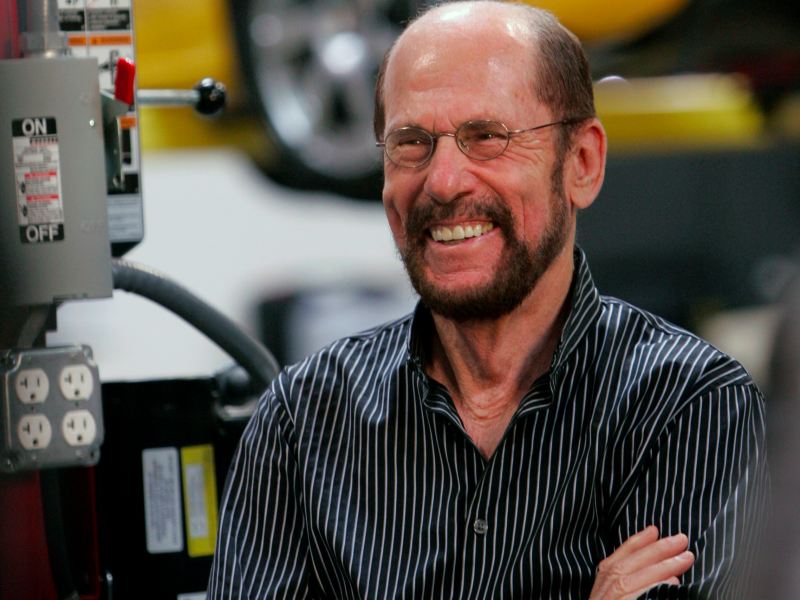
Tesla announced Drori would take the helm at Tesla at the end of November. Drori officially took the reigns of the company on December 3, 2007.
Drori, an Israeli engineer and tech veteran, was tasked with bringing Tesla's first car, the Roadster to market by the first quarter of 2008.
February 1, 2008: Tesla hands over keys of first production Roadster.
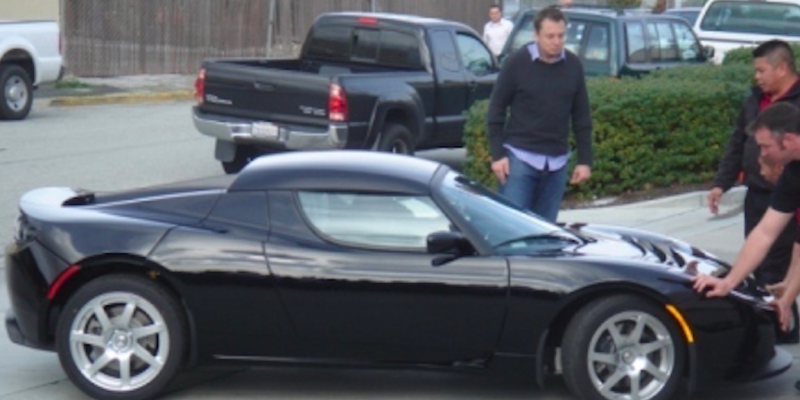
Drori managed to bring the Roadster into production on time and the first vehicle was delivered to Musk, who was serving as the company's chairman at the time.
To celebrate the occasion, Musk jumped in the Roadster (P1) and led four other prototype Roadsters packed with engineers down Highway 101 and University Avenue in Palo Alto, Calif.
March 17, 2008: The company begins regular production of Roadster.
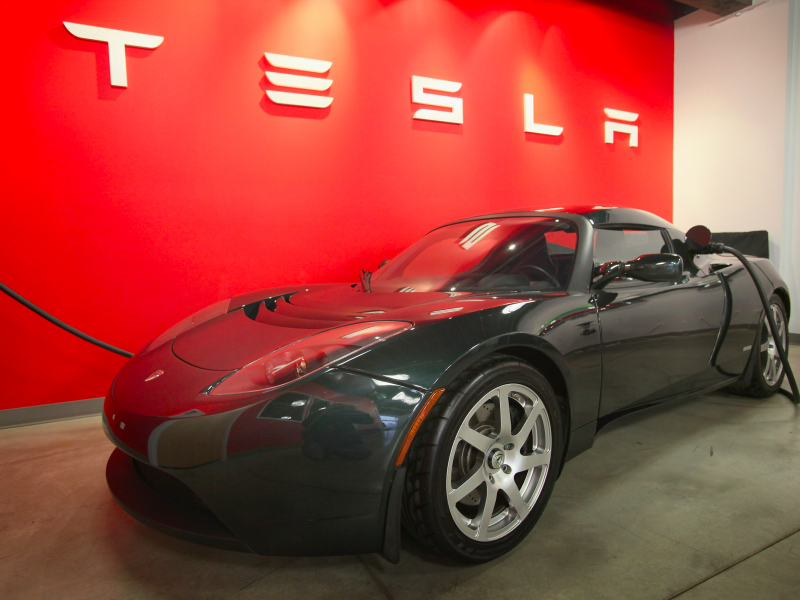
By mid-March, the company had met its goal of getting regular production of the Roadster up and running.
At the time, Drori referred to the event as a "milestone for the company and a watershed for the new era of electric vehicles."
Tesla produced the Roadster, which priced at $109,000, until January 2012 and in total sold 2,450 Roadsters, according to a 2012 SEC filing.
October 15, 2008: Tesla delays the Model S and Musk steps in to become the CEO of the company.
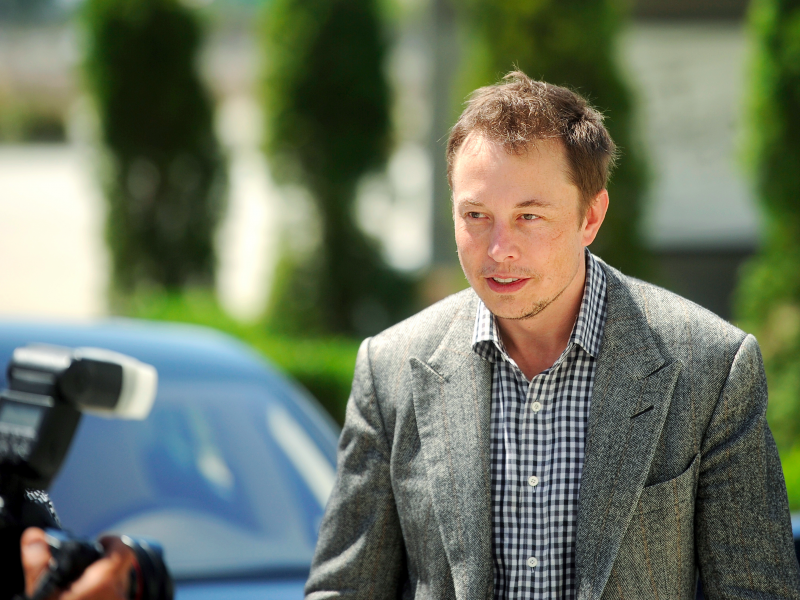
By October, Tesla was feeling pressures created by the financial crisis.
"The global financial system has gone through the worst crisis since the Great Depression, and the effects are only beginning to wind their way through every facet of the economy. It's not an understatement to say that nearly every business will be impacted by what has unfolded in the past weeks, and this is true for Silicon Valley as well," Musk said at the time.
Musk announced he would be taking over the company and that there would be layoffs. He also pushed back the launch date of the Model S to mid-2011. It was previously slated to go into production in 2010.
November 3, 2008: Tesla secures a $40 million financing commitment helping it avoid bankruptcy.
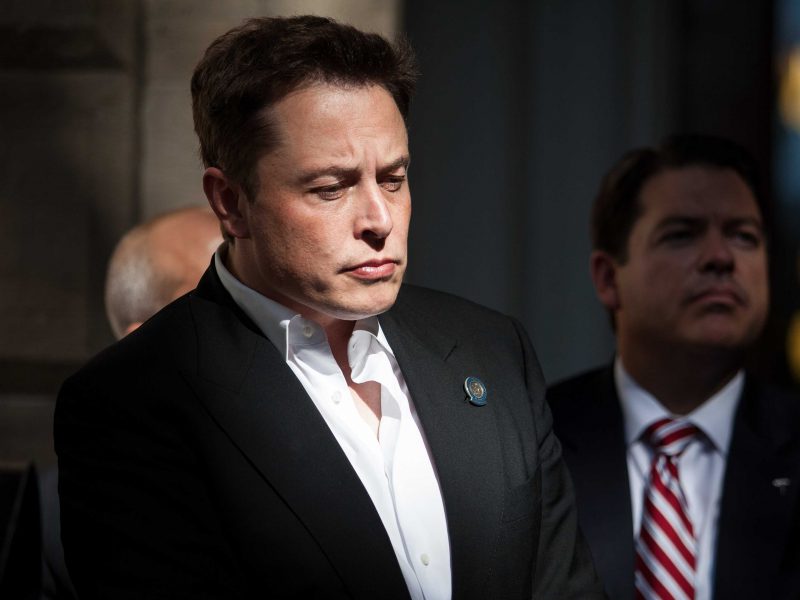
By November 2008, the company's financial situation had worsened and Tesla was on the brink of bankruptcy.
To help restore Tesla's coffers and speed up the production of the Tesla Roadster, the company's board of directors approved $40 million in convertible debt financing.
However, while the board approved the deal in November, the documents for the financing round weren't signed until December 2009, putting Tesla in a perilous situation.
"Even then, we only narrowly survived...We actually closed the financing round on Christmas Eve 2008. It was the last hour of the last day that it was possible," Musk said during a Q&A at the Paris-Sorbonne University in December 2015.
March 26, 2009: Tesla unveils Model S prototype.

Tesla unveiled its first electric sedan, the Model S, in March 2009 in Hawthorne, California at the SpaceX headquarters.
The first generation Model S had a range of more than 300 miles per charge and could go from 0 to 60 mph in 5.5 seconds.
By May 12, 2009, Tesla had already surpassed 1,000 reservations for the Model S.
May 19, 2009: Daimler takes a 10% stake in Tesla for $50 million.
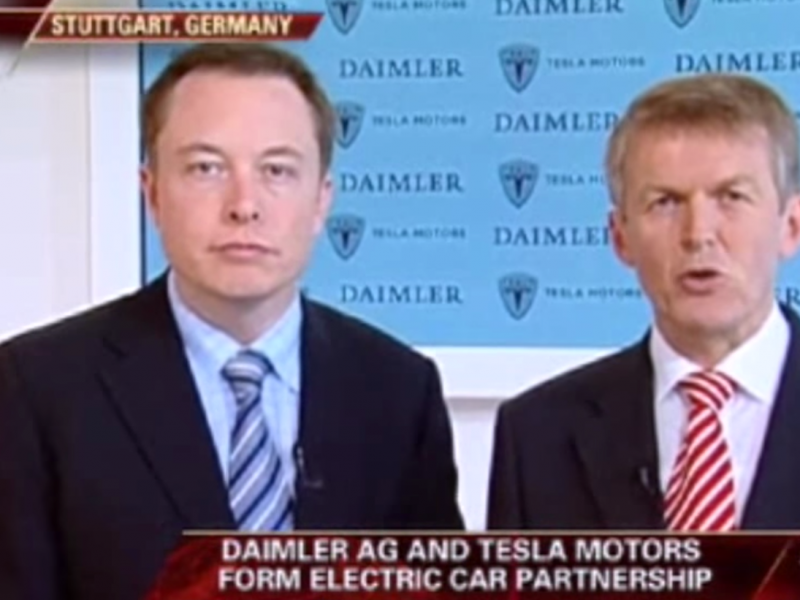
The $40 million financing round helped get Tesla through its darkest hour, but the company needed more resources to further develop its battery technology.
Tesla and Daimler had already been in partnership for about a year working on an electric Smartcar. But by May, Daimler made a long-term bet on Tesla by taking a 10 percent stake in the company. The two companies agreed to work together on developing battery and electric drive systems.
"We are looking forward to a strategic cooperation in a number of areas including leveraging Daimler's engineering, production, and supply chain expertise. This will accelerate bringing our Tesla Model S to production and ensure that it is a superlative vehicle on all levels," Musk said at the time.
In June 2009, Tesla also received a $465 million loan from the Department of Energy, which it repaid in full by May 2013.
June 29, 2010: Tesla went public for $17 per share.
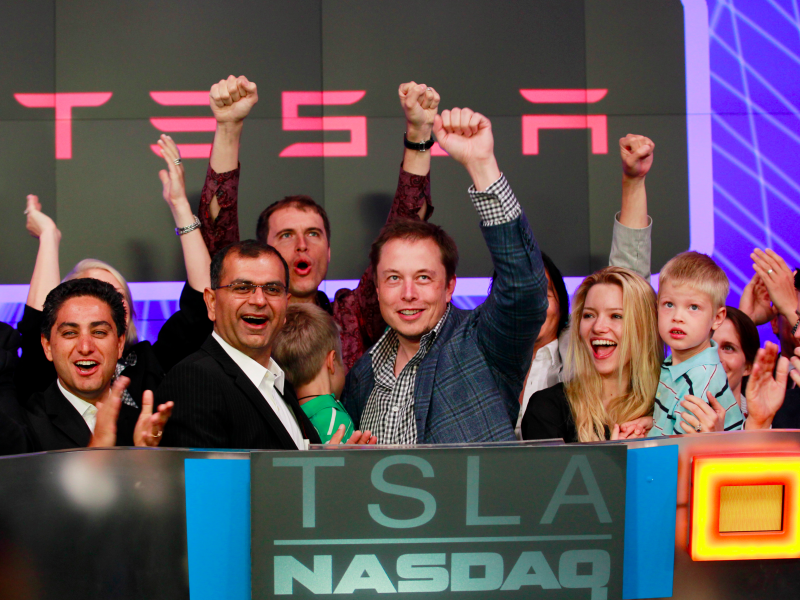
Tesla offered 13.3 million shares at $17 per share. The company raised $226.1 million.
October 2, 2011: Elon Musk reveals Model S beta.
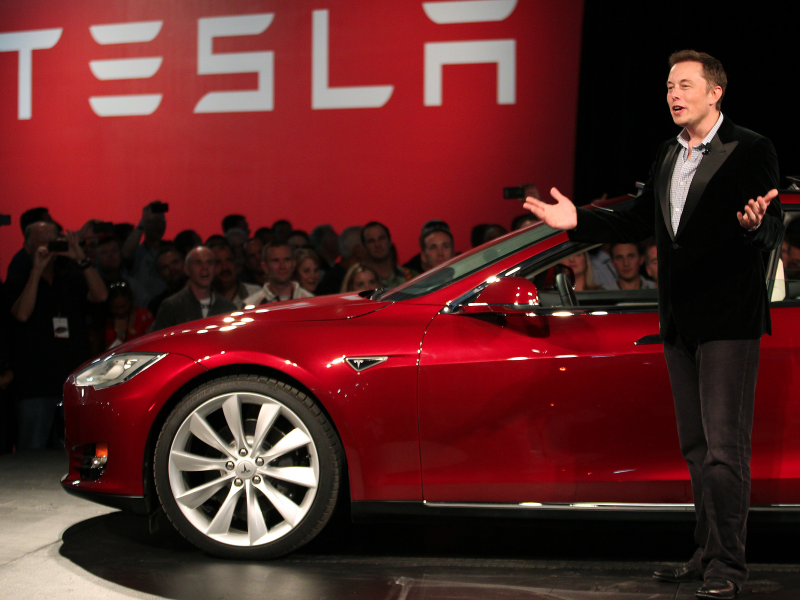
Tesla gave a glimpse of what it's future car would be like when it revealed a Model S prototype at an event in October at its Fremont factory for about 3,000 reservation holders.
Musk revealed that the vehicle would get 320 miles per charge and go from 0 to 60 mph in 4.5 seconds.
"The oil companies said electric cars can't work, but the truth is, they don't want them to work. But here it is. They would say this car is the equivalent of a unicorn. Well, tonight you had the opportunity to ride a unicorn," Musk said at the event.
February 9, 2012: The Model X prototype is revealed.
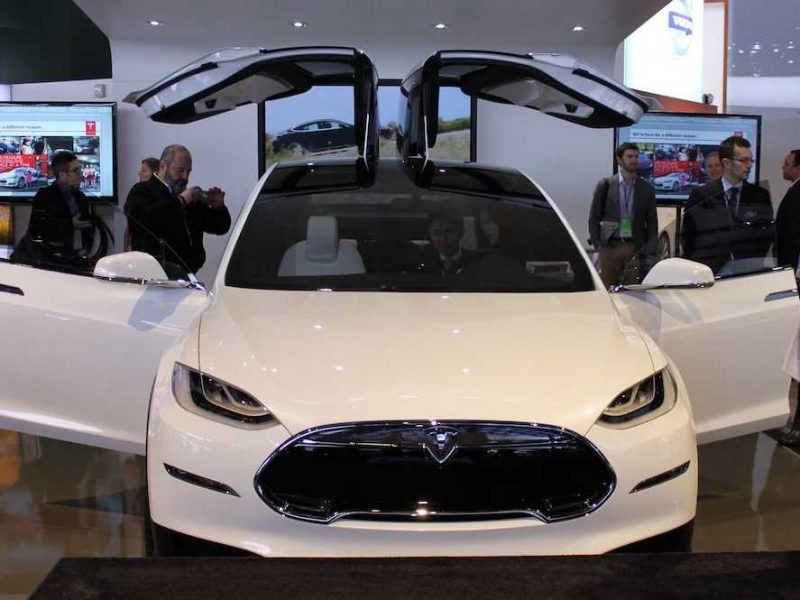
Just a few months after the Model S reveal, Musk unveiled a prototype of the Model X, the company's first crossover SUV.
The car's most novel feature, of course, was its Falcon Wing doors.
The Model X was very well received. By Feb. 14, 2012, the company had amassed advance sales of more than $40 million. In fact, on Feb. 9, the night reservations opened up, traffic on TeslaMotors.com increased 2,800%, the company said.
At the time of its reveal, Tesla aimed to have the Model X in production by 2014. However, it wouldn't actually really enter production until the end of 2015.
June 22, 2012: Tesla begins delivery of Model S.
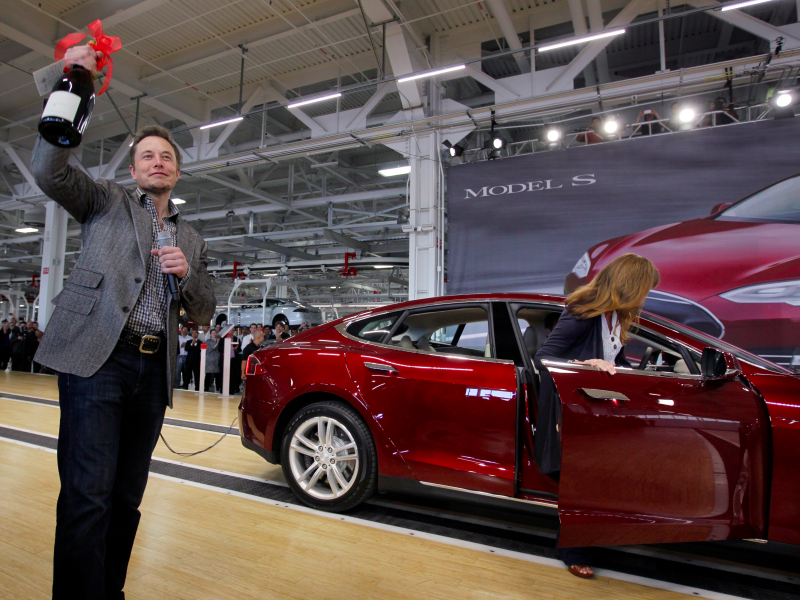
Tesla originally intended to deliver the Model S in 2011. However, the company didn't begin deliveries until late mid-2012.
Tesla delivered the Model S to the first customers at an event at the Tesla factory in Freemont, California on June 22, 2012.
June 12, 2014: Tesla open-sources its patents.
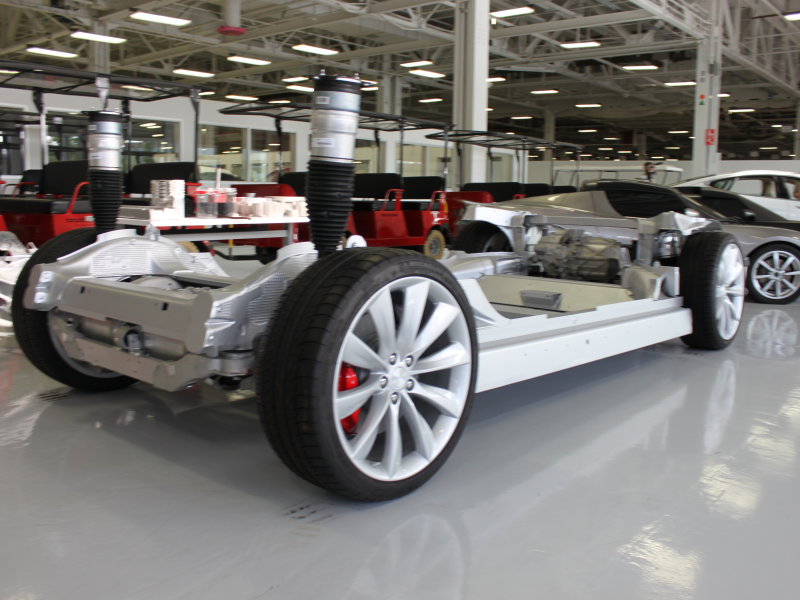
Musk further demonstrated his commitment to advancing the adoption of electric cars when he open-sourced Tesla's patents in 2014.
At the time, Musk said that Tesla would not take legal actions against other companies who wanted to use the patents to create EVs.
"Tesla Motors was created to accelerate the advent of sustainable transport. If we clear a path to the creation of compelling electric vehicles, but then lay intellectual property landmines behind us to inhibit others, we are acting in a manner contrary to that goal," Musk said in a blog post.
"Tesla will not initiate patent lawsuits against anyone who, in good faith, wants to use our technology."
September 4, 2014: Nevada is selected as the site of the company's Gigafactory.
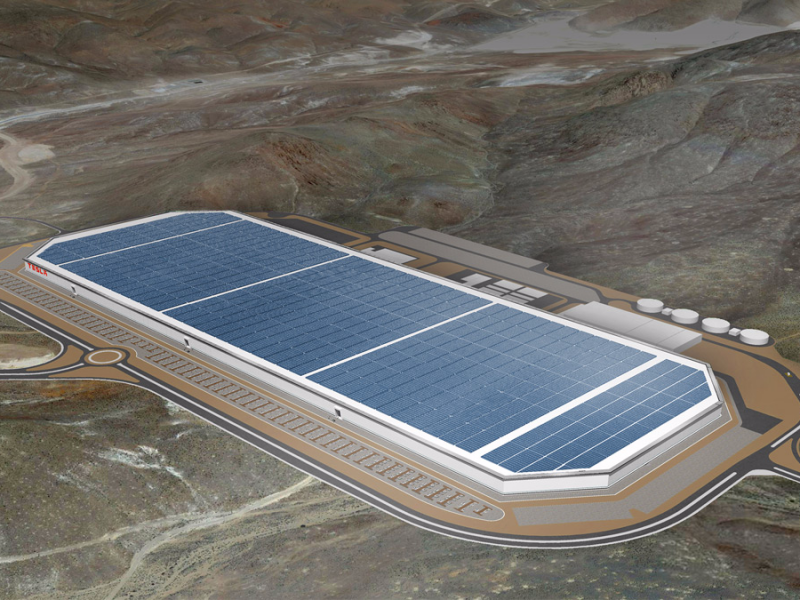
Tesla announced its plans to build its giant battery factory, dubbed the Gigafactory, in February 2014 and it didn't wait long before looking for somewhere to build it.
Tesla ultimately decided on a site in Storey, Nevada appropriately located along Electric Avenue.
The original site was 1,000 acres, but in June 2015 the company purchased an additional 1,864 acres of adjacent land.
According to Tesla's website, the giant factory will help it dramatically cut the cost of its batteries by "using economies of scale, innovative manufacturing, reduction of waste, and the simple optimization of locating most manufacturing process under one roof."
Once the factory is fully operational by 2020, Tesla estimates the factory will enable it to reduce its battery prices by about 30%.
The lowered cost of the batteries will enable the company to price its Model 3 at about $35,000.
October 9, 2014: Elon Musk unveils Tesla's semi-autonomous self-driving system called Autopilot.
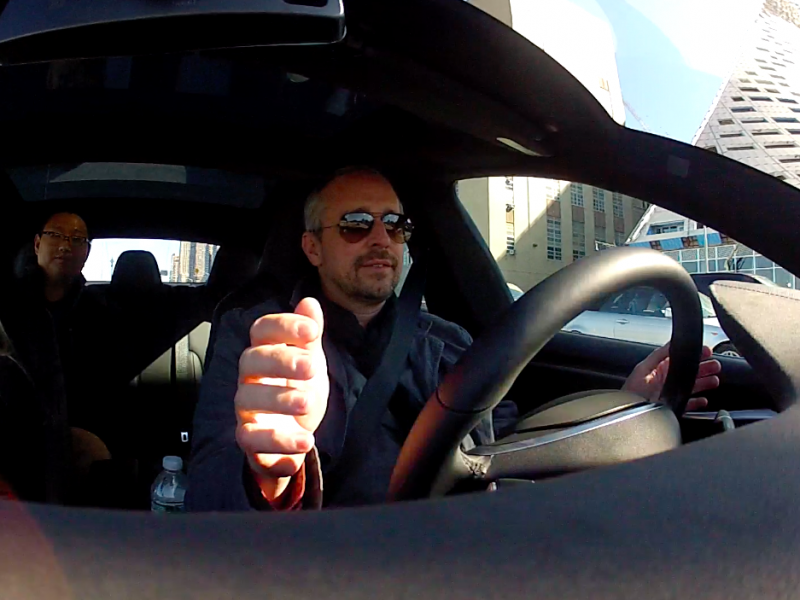
At a company event in October, Musk revealed a new dual motor option for the Model S and announced that all Tesla vehicles produced beginning October 2014 were installed with Autopilot hardware.
The system was composed of four parts: a forward-looking radar, a camera with image recognition, and sonar sensors that give the system a 360-degree view around the car.
Musk said that some of the initial features included in the system would be automatic cruise control, lane-keeping assist, and active emergency braking.
April 30, 2015: Tesla reveals Powerwall, a giant rechargeable battery for your home, and its Powerpack, a battery for commercial use.
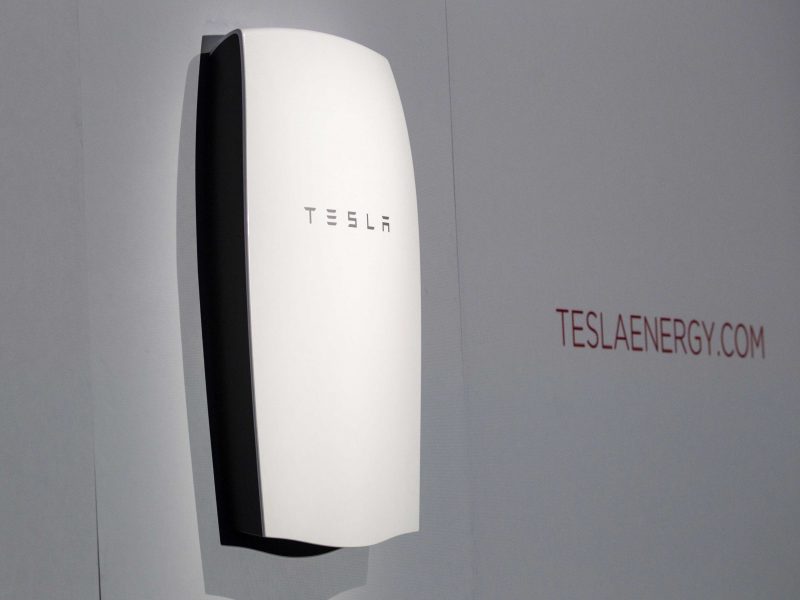
Tesla made a big push into energy when it unveiled the Powerpack and Powerwall at an event in Hawthorne, California in 2015.
Musk said that batteries were the "missing piece" of Tesla's business model and claimed that 160 million Powerpacks could power the United States.
The company followed up in a statement on its website declaring that "Tesla is not just an automotive company it's an energy innovation company."
September 29, 2015: Model X deliveries begin.
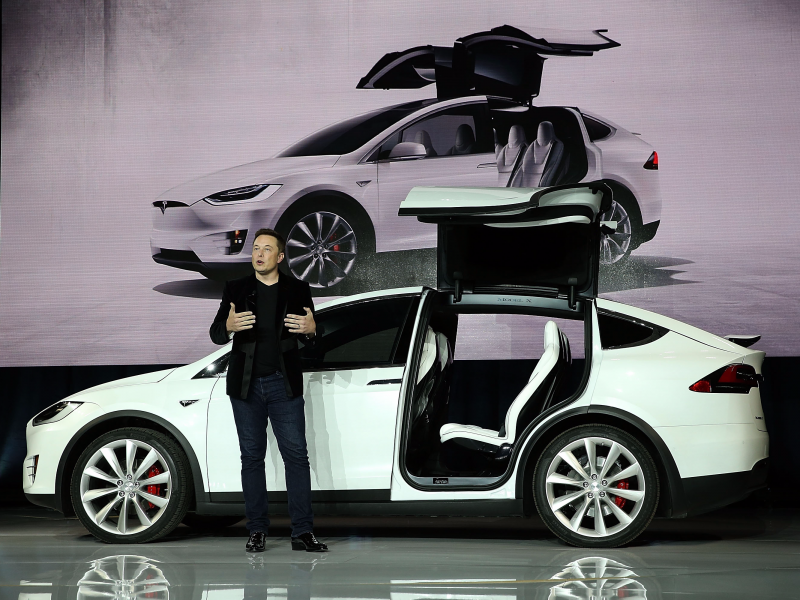
Tesla had originally planned to launch its Model X Crossover SUV in late 2013 or early 2014, but production delays forced the company to push back deliveries by almost two years.
The vehicle's highly-specialized features, like its Falcon Wing doors and bioweapon defense mode air-filtration system, made the car complicated to manufacture on a mass scale.
In fact, during Tesla's 2016 second-quarter earnings call, Musk emphasized just how dire the production situation had become.
"We were in production hell," Musk said. "We climbed out of hell in June."
October 14, 2015: Tesla begins rolling out Autopilot.
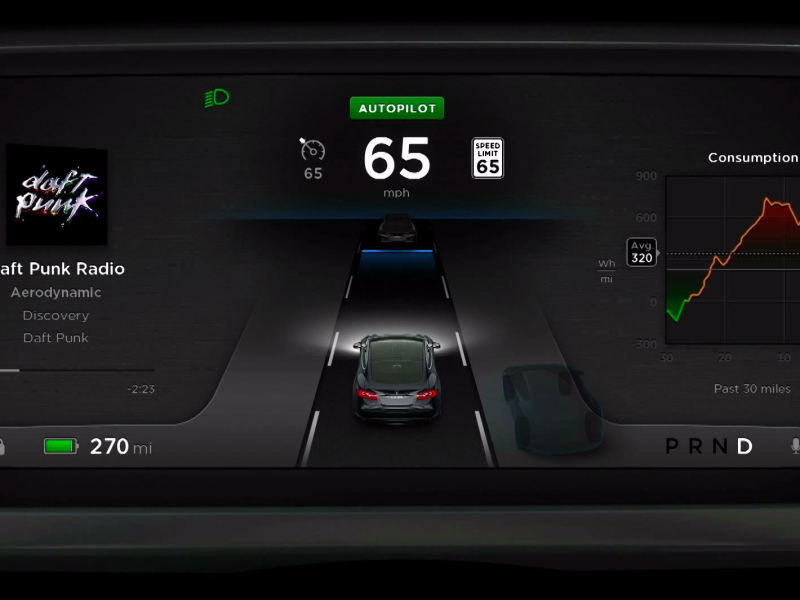
Tesla began rolling out its 7.0 software update in October, which ultimately activated Autopilot features in cars equipped with the hardware.
The feature initially enabled cars to drive themselves in certain conditions.
However, in January 2016, the company rolled out its 7.1 software update which gave Autopilot-equipped vehicles more features, including the ability to self-park.
March 31, 2016: Musk reveals the prototype of Tesla's first mass-market car, the Model 3.
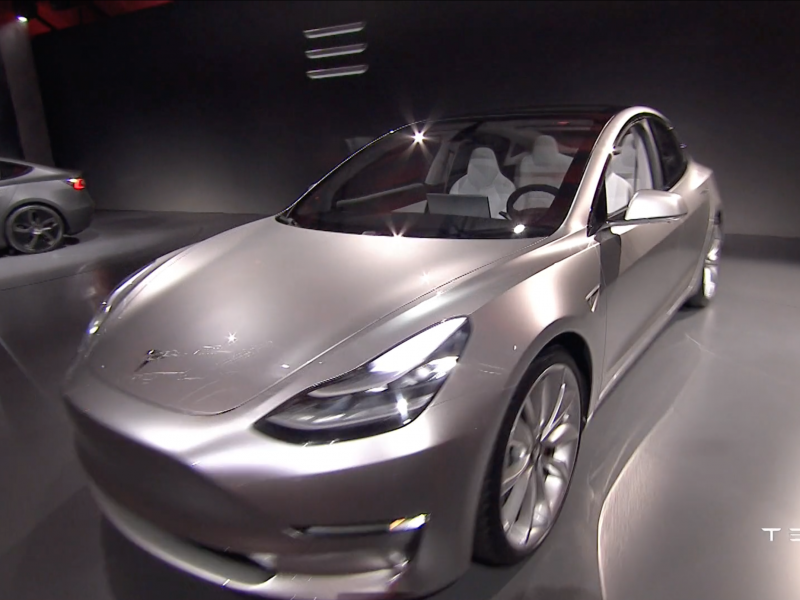
Musk finally unveiled the much-anticipated Model 3 during the first quarter of 2016.
While only a prototype, the car gave Tesla fans a good idea of what to expect with the production model.
Musk announced that the car would get 215 miles or more per charge and go from 0-60 mph in less than six seconds.
Tesla plans to launch the $35,000 car by the end of 2018.
May 7, 2016: The first fatal Autopilot accident occurs.
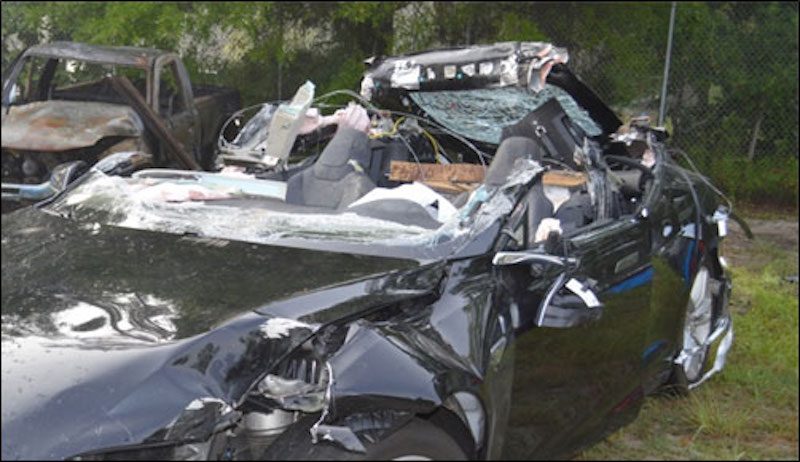
The first fatal Autopilot accident occurred in May, but word didn't get out about the incident until more than a month later.
On June 30, government regulators revealed they were looking into a tie between the fatal accident and Tesla's semi-autonomous Autopilot function. Tesla also issued a statement and Elon Musk shared his condolences, calling the incident a "tragic loss."
According to Tesla's statement, the Model S was driving down a divided highway when a tractor trailer cut across the highway perpendicular to the vehicle.
"Neither Autopilot nor the driver noticed the white side of the tractor trailer against a brightly lit sky, so the brake was not applied. The high ride height of the trailer combined with its positioning across the road and the extremely rare circumstances of the impact caused the Model S to pass under the trailer, with the bottom of the trailer impacting the windshield of the Model S," Tesla said in its blog post.
June 21, 2016: Tesla announces plans to purchase Solar City for $2.6 billion.
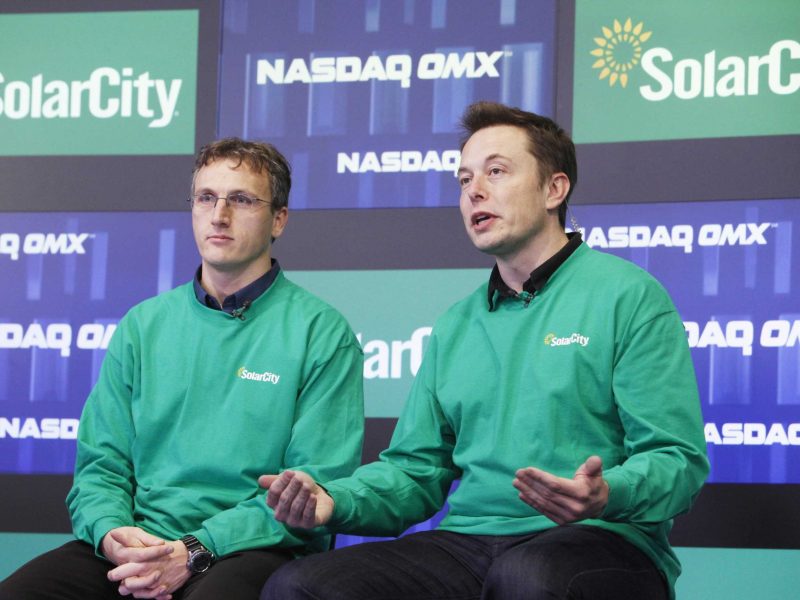
Tesla took everyone by surprise in June when the company made a $2.6 billion bid to acquire SolarCity, a solar installation company run by Musk's cousin.
Not surprisingly, the deal was controversial from the start, primarily because SolarCity was about $3 billion in debt and the deal was seen as a bailout.
Further complicating the matter, Musk was also the chairman of the company.
July 20, 2016: Elon Musk reveals Tesla Masterplan Part Deux.
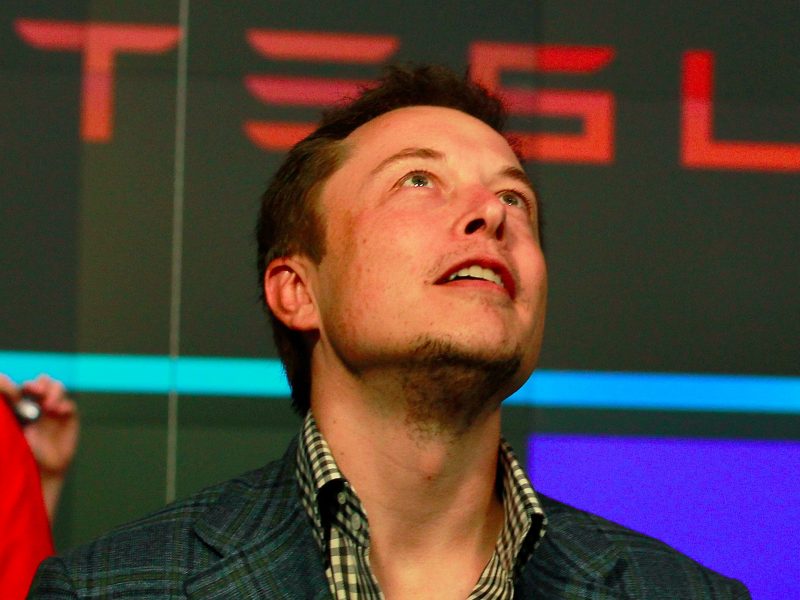
In July, Musk finally revealed the second part of his company's "master plan," a plan which focuses on four key goals:
1. Develop "stunning" solar roofs that seamlessly integrate with Tesla's battery storage.
2. Roll out more affordable vehicles "to address all major segments."
3. Advance its self-driving technology so that it is "ten times safer" than manual driving.
4. Roll out a car sharing program that enables Tesla owners to make money by renting out their autonomous car.
Musk's plans for an autonomous "shared-fleet" program were especially interesting.
Musk said that Tesla owners will be able to add their vehicle to the shared fleet and start making money by simply tapping a button on their Tesla phone app.
"It generate income for you while you're at work or on vacation, significantly offsetting and at times potentially exceeding the monthly loan or lease cost," Musk said in a company blog post. "This dramatically lowers the true cost of ownership to the point where almost anyone could own a Tesla."
Nov. 8, 2016: Tesla buys a German engineering company to help it push further into automation.

Musk made it clear in early 2016 that automation was the future for Tesla.
During a shareholder meeting in June, Musk said that he saw a huge opportunity in "building the machine that makes the machine."
Musk reiterated these comments in September during an interview with Y Combinator's Sam Altman.
"The biggest epiphany I've had this year is that what really matters is the machine that builds the machine, the factory," he said. "And that this is at least two orders of magnitude harder than the vehicle itself."
So it wasn't all that surprising when Tesla announced it was buying Grohmann Engineering, a German engineering firm that specializes in designing systems for manufacturing automation.
November 21, 2016: Tesla officially gets into the solar business.
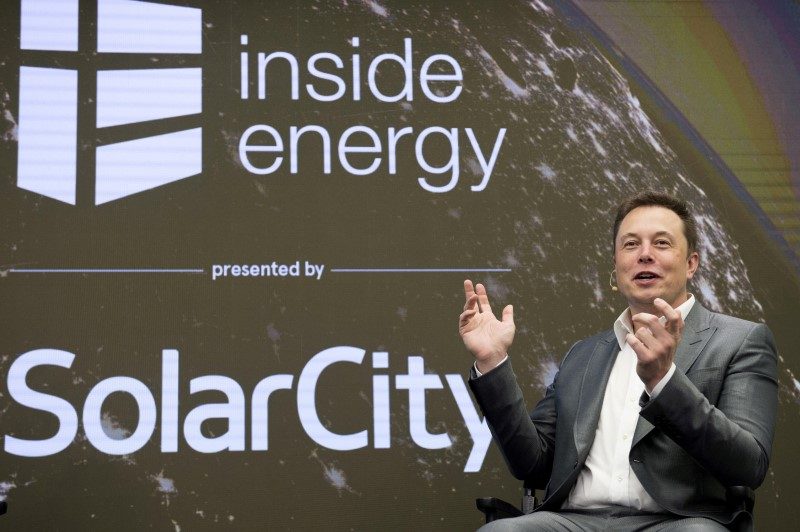
After months of criticism, Tesla was finally able to close its deal with SolarCity in November.
Both SolarCity and Tesla had a special meeting for shareholders to vote on the deal and according to a statement from Tesla, more than 85% of its shareholders voted in favor of the merger.
Both Musk and Rive recused themselves from the vote.
The deal was worth about $2 billion and Tesla absorbed SolarCity's $3 billion in debt.
January 19, 2017: The federal government finds no defect with Tesla Autopilot.
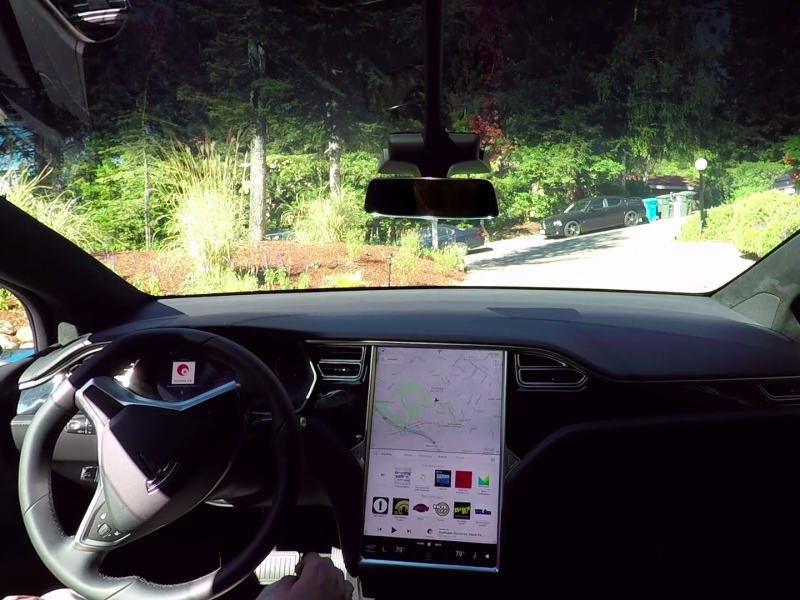
After a six-month investigation, Tesla could finally let out a sigh of relief.
In January 2017, federal regulators closed their investigation into the first Autopilot fatality and said that they had found no defects with the system.
February 1, 2017: Tesla officially changes its name.
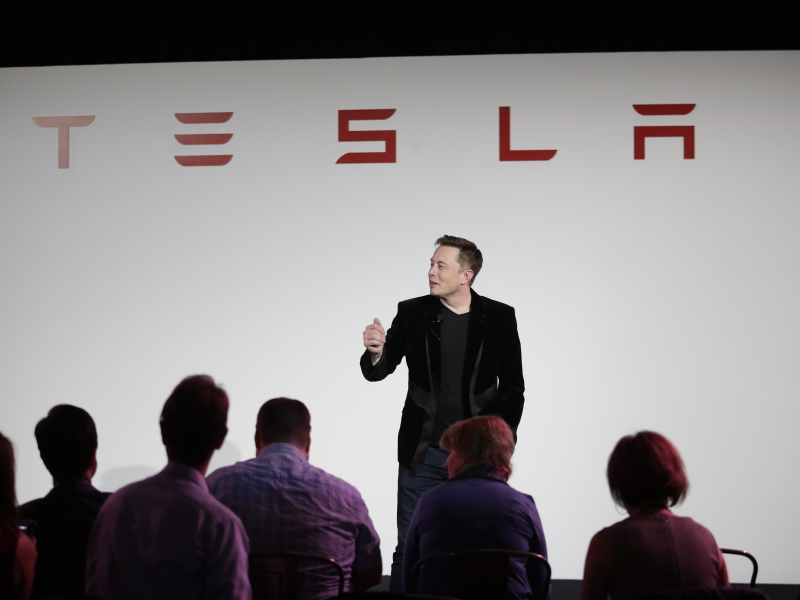
Tesla may have officially changed its name earlier this week, but its new identity had actually been in the works for a while.
In February 2016, CEO Elon Musk tweeted about acquiring the domain. And in July the company shortened its website from teslamotors.com to just Tesla.com.
But on Wednesday the company said in a filing with the SEC that the company was officially changing its corporate title to just Tesla Inc, bringing the company into a new era of being an energy company.

